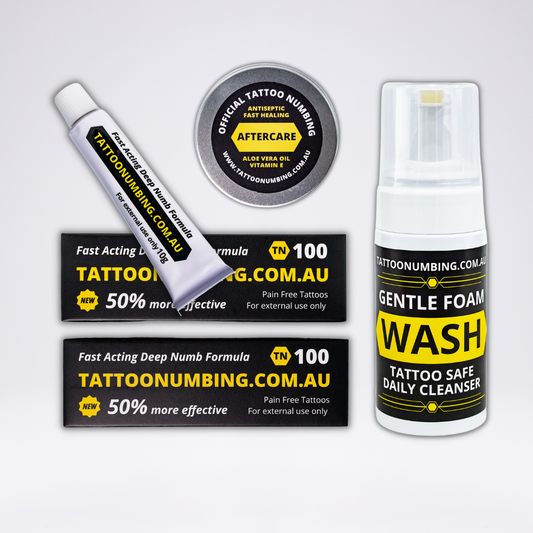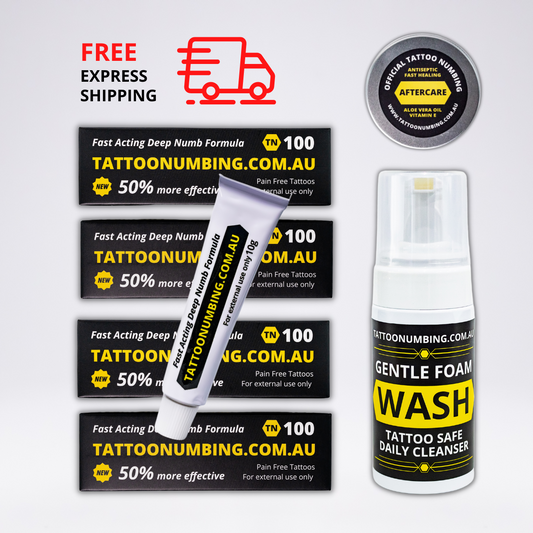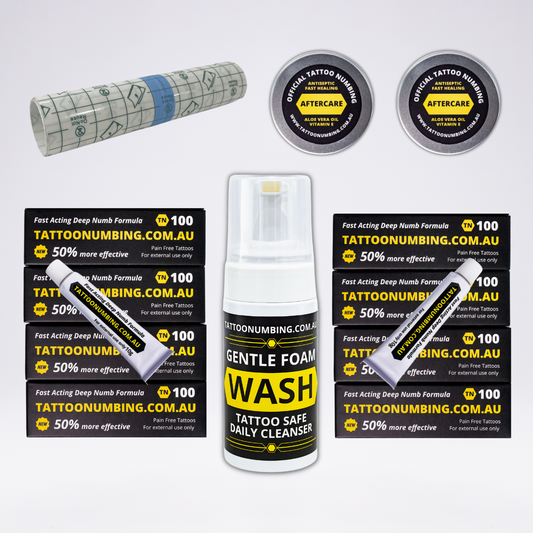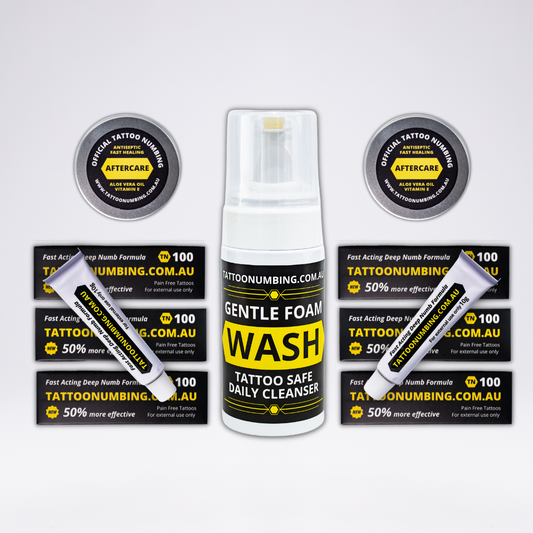Numbing Introduction:
In the realm of pain relief, lidocaine stands out as a remarkable compound that has revolutionized the way we experience medical procedures and minor surgeries. This local anesthetic, known for its effectiveness in numbing pain, has a fascinating history that begins with its discovery and has since expanded into various applications, including its use in numbing creams for tattoos.

Lidocaine Discovery and Development:
Because cocaine is highly addictitve, suitable replacements were required for medical use. Lidocaine, derived from cocaine was first synthesized in 1943 by Swedish chemist Nils Löfgren and was initially called Xylocaine.
Around the same time Novocaine was developed however this too was found to be addictive, making Lidocaine the clear winner, although It wasn't until the 1950s that lidocaine gained prominence for its anesthetic properties.
This breakthrough led to its widespread adoption in the medical field, where it became a staple for local anesthesia during surgeries, dental procedures, and other medical interventions.

Safe Uses for Numbing and Anesthetic Purposes:
Lidocaine's safety and efficacy have been extensively studied, and it has proven to be a reliable choice for local anesthesia. Its mechanism of action involves blocking nerve signals in a specific area, resulting in temporary numbness without causing a loss of consciousness. This makes it an ideal choice for a variety of medical procedures and, more recently, for topical use in numbing creams.

Topical Use in Tattoos:
The application of lidocaine in the world of tattooing has brought about a welcome relief for individuals seeking body art without the associated pain. Topical lidocaine creams, when applied before the tattooing process, effectively numb the skin, making the experience more comfortable for the individual undergoing the procedure. This has led to increased acceptance and popularity of lidocaine-based numbing creams in tattoo studios worldwide.

Resistant Cases:
While lidocaine is generally well-tolerated, some individuals may exhibit resistance to its numbing effects. Factors such as individual variations in metabolism or allergic reactions can contribute to reduced efficacy. However, such cases are relatively rare, and alternative anesthetic options may be explored in consultation with healthcare professionals.
The Pinnacle of Topical Numbing Creams: TN100 from Tattoo Numbing Australia
In the realm of topical numbing creams for tattoos, TN100 from Tattoo Numbing Australia stands out as a premium choice. Known for its superior formulation and effectiveness, TN100 incorporates lidocaine as a key ingredient, ensuring a pain-free tattooing experience for clients. The cream is designed to be fast-acting, long-lasting, and provides maximum comfort during the tattooing process.

Conclusion:
Lidocaine's journey from discovery to its current role in numbing creams for tattoos is a testament to its versatility and effectiveness. As technology and medical understanding continue to advance, lidocaine and its derivatives are likely to play an increasingly vital role in pain management across various medical and aesthetic fields. For those seeking the best in topical numbing creams for tattoos, TN100 from Tattoo Numbing Australia emerges as a top-tier choice, ensuring both the safety and comfort of the individuals undergoing the transformative experience of body art.





